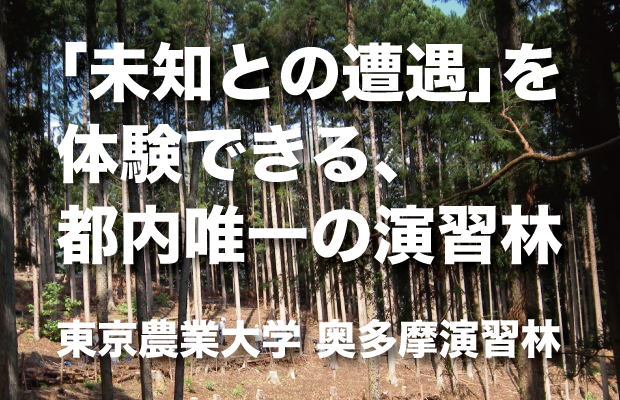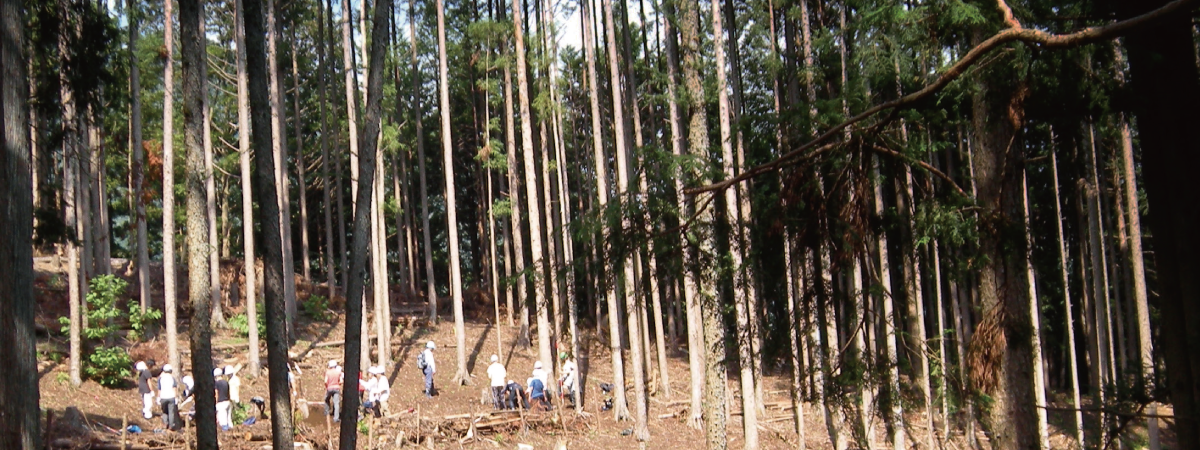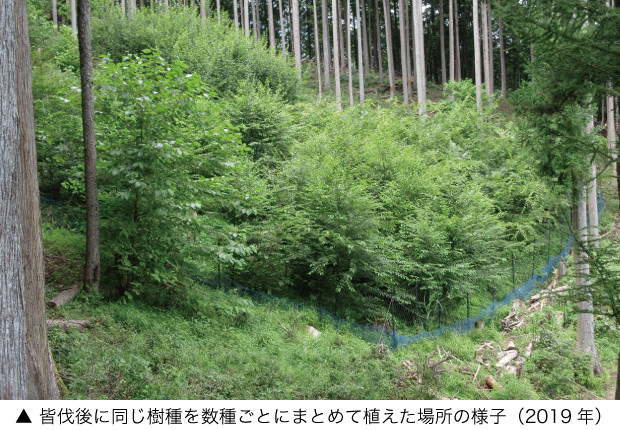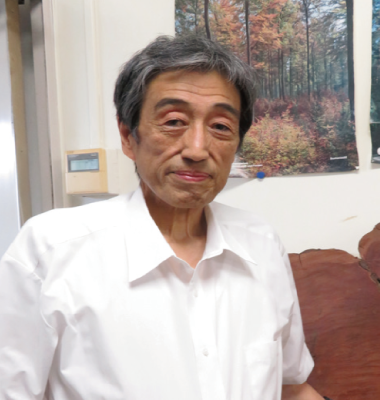- Information for Middle and High School Researchers
The only training forest in Tokyo where you can experience an "encounter with the unknown" / Tokyo University of Agriculture Okutama Training Forest
2018.02.12

The field is a treasure chest of research materials. Anyone can find the "Why?" to start a research project. to start a research project. One of the best places to experience field research is a training forest. These forests are managed by universities for education and research, and about 30 public and private universities in Japan use them for student training and educational research. For this interview, we spoke with Professor Izumi Sugawara, who is in charge of the Okutama Experiment Forest of Tokyo University of Agriculture, the only experiment forest in Tokyo.
Research how to create and use forests.
Mr. Sugawara's research theme is the "creation of diverse forests. During Japan's rapid economic growth period, secondary broadleaf forests (forests regenerated by natural or artificial means after natural forests had all disappeared due to logging, etc.) were cut down and planted with fast-growing trees such as Japanese cedar. The forestry industry, which grows trees uniformly and logs them all at once, is more profitable, but it also drastically alters the forest environment. As a result, the diversity of organisms other than trees is also adversely affected. How can we artificially create forests with diversity again? Mr. Sugawara is conducting research on how to plant broadleaf trees and conifers in an organized manner or in a mixed manner, and at what timing to plant trees of different growth rates after clear-cutting a certain section of the forest (see photo).
Furthermore, Mr. Sugawara is even considering using the wood as lumber. Currently, the use of domestically produced timber is very limited. We will research how to plant, grow, and efficiently process timber locally, and create new value for timber that is not uniformly distributed. While using them in moderation, forests are also maintained. He continues his research in the hope that forests and humans can coexist in a good relationship.


Nature is full of research themes.
Mr. Sugawara describes the appeal of forests as "a treasure trove of encounters with the unknown. Stepping into a forest, one encounters a wide variety of flora and fauna just by looking at them, and one's ears are filled with the sounds of various insects and birds. The smells of soil and leaves, which are usually inaccessible in town, stimulate the nose, and the texture of the bark and leaves is different from one to another. As you experience what is in front of you using many of your five senses - sight, hearing, smell, and touch - it is easy to ask yourself the genuine question, "What is this?" is easily generated. It is also important to note that because the organisms are not under human control, as is the case with indoor breeding and cultivation, unexpected things can easily happen. When one goes out into the field for a particular purpose, another discovery is often the catalyst for research.
In recent years, labor saving in forestry has also become an issue. To this end, new research themes include how to visualize forest structure, how to determine thinning targets based on spatial structure and slope direction from an informatics perspective, and how to efficiently dry harvested trees for timber. From either a scientific or engineering perspective, forests are a place where new themes can be encountered.
Let's leave the books behind and go out into the woods.
The Okutama Experiment Forest has been involved in various ways not only with research but also with the local community. Although located in Tokyo, the forest is completely dark at night, which is difficult to find in the city. On the other hand, the forest is well maintained and has facilities such as a training center. The training forest, which is a "safe and accessible forest," is also used for Boy Scout encampments, practical training at a nursing college, and mountain rescue training by the fire department. Although it is necessary to coordinate with university students' training periods, Mr. Sugawara hopes that "a variety of people will make use of the forest. In the past, they have held events for children to make chopsticks using wood from the forest. The wood has different properties depending on the species of tree and the parts of the tree, which should provide an opportunity for people to experience firsthand the diversity of the forest.
It has been a long time since students were required to conduct research in junior high and high schools. While there is a method of carrying on a theme from generation to generation, students may often wonder where to start thinking about a new research theme. In such cases, why not step into the forest with your students?

Tokyo University of Agriculture Okutama Experiment Forest
Izumi Sugawaraprofessor
